More about Fare Counters
Our exhibit includes two different examples of trolley fare counters. Nationwide there were dozens of different designs, many smaller than those you see here.
Fare counters or registers were used to record the number of passengers who boarded each trolley, both OUT bound and IN bound. They were most often mounted either centered or just offset above one of the doorways in the trolley car. In many cases they were designed to work with poles and ropes running the length of the trolley car so that the crew could document the number of passengers boarding from almost anywhere in the vehicle.
The numbers on these machines would be checked against the paper report (see an example here) that the trolley crew turned in to the carbarn foreman or other supervisor at the end of each trip. The report would accompany the cash, tickets and transfers collected on that trip. See an example of a transfer ticket from Hagerstown or Frederick.
The two machines in our collection were acquired from H&F Railway collectors and do match those used on several of the company’s trolleys, but due to lack of records cannot be proven to have come off of H&F cars. Due to the placement of these machines at the highest point of the trolley cars they are often obscured by shadow in photographs.
Round Fare Counter
This is an International Register Company Fare Counter
Donated by Alex Haines in 2023

This machine is claimed to come from H&F #170, and matches the shape of the machine known to be present on that car. It cannot currently be proven that this is the counter shown. It is unknown why #170 had a different machine than its identical sister cars in the fleet, however that was not the only difference the car displayed from the others.
This machines would be used to count the number of passengers who boarded the trolley, and documented those who paid with a fare or a transfer. A key would be entered into the bottom left and a rope protruding from the bottom right corner would be pulled to advance the mechanism. A dial in the right side could also advance the mechanism.
The interior mechanisms and the mounting bracket.
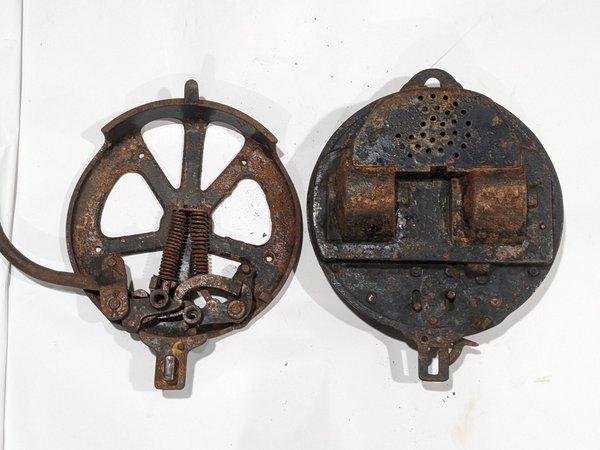
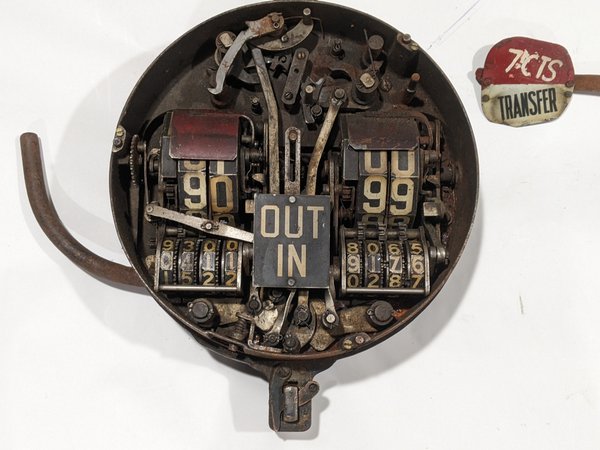
See our counter function:
Square Fare Register
This is an Ohmer Company Fare Register.
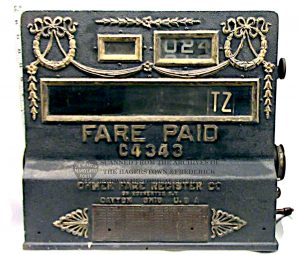
Serial Number:
Donated by Betty Duke in 2022
Part of the Carroll James Collection
These were commonly used in larger interurban cars and were known to have been the model used in H&F combines 35, 168, 169, 171 and 172.
Unlike the round counter, the Ohmer register not only records but also prints the counts onto a roll of paper in the bottom of the machine. Dials on the sides of the machine set the date to be printed and the operator of the trolley would be assigned a key with a typewriter style number to identify who was operating the trolley during that trip.
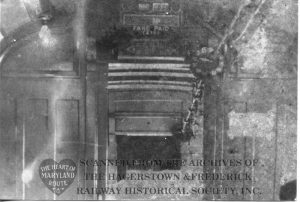
This machine is missing a back section which used a bicycle style chain attached to a pole running the length of the vehicle to move a small metal hook left and right behind the register. That hook would be positioned to select what amount or type of fare was being paid with. The horizontal pole running the entire 48 foot length of the trolley that was connected to this system could be turned from anywhere in the car, and ended in a vertical pole in the center driver’s window on each end of the car.
The brass wheel of numbered rings also seen in the case was an indication wheel which would be mounted beside the register on the wall, the arrow attached to that long pole and pointing to the amount currently selected behind the machine.
See the internal mechanisms:
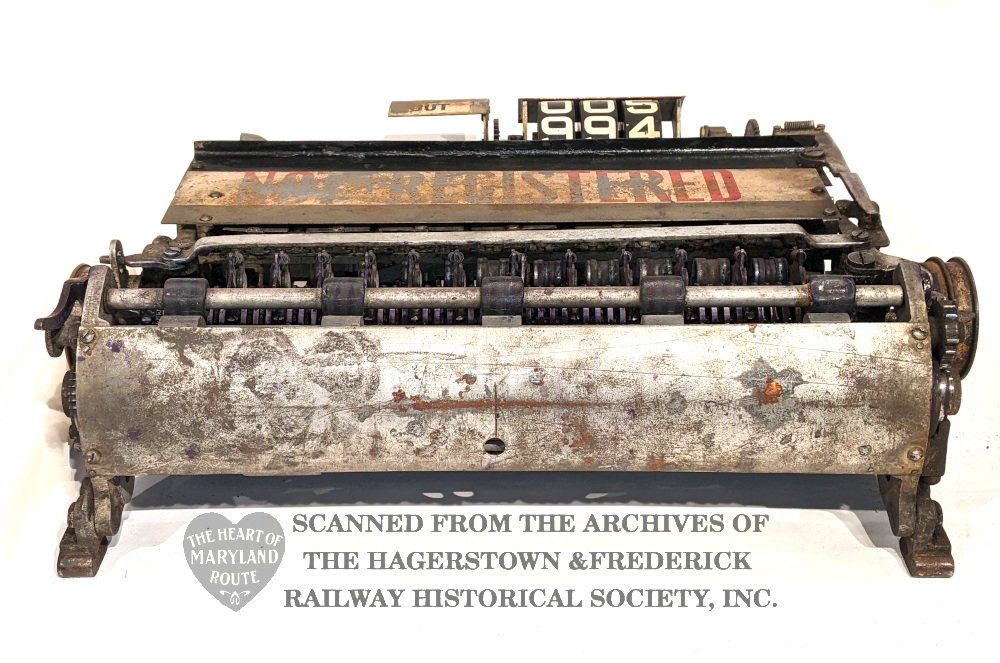
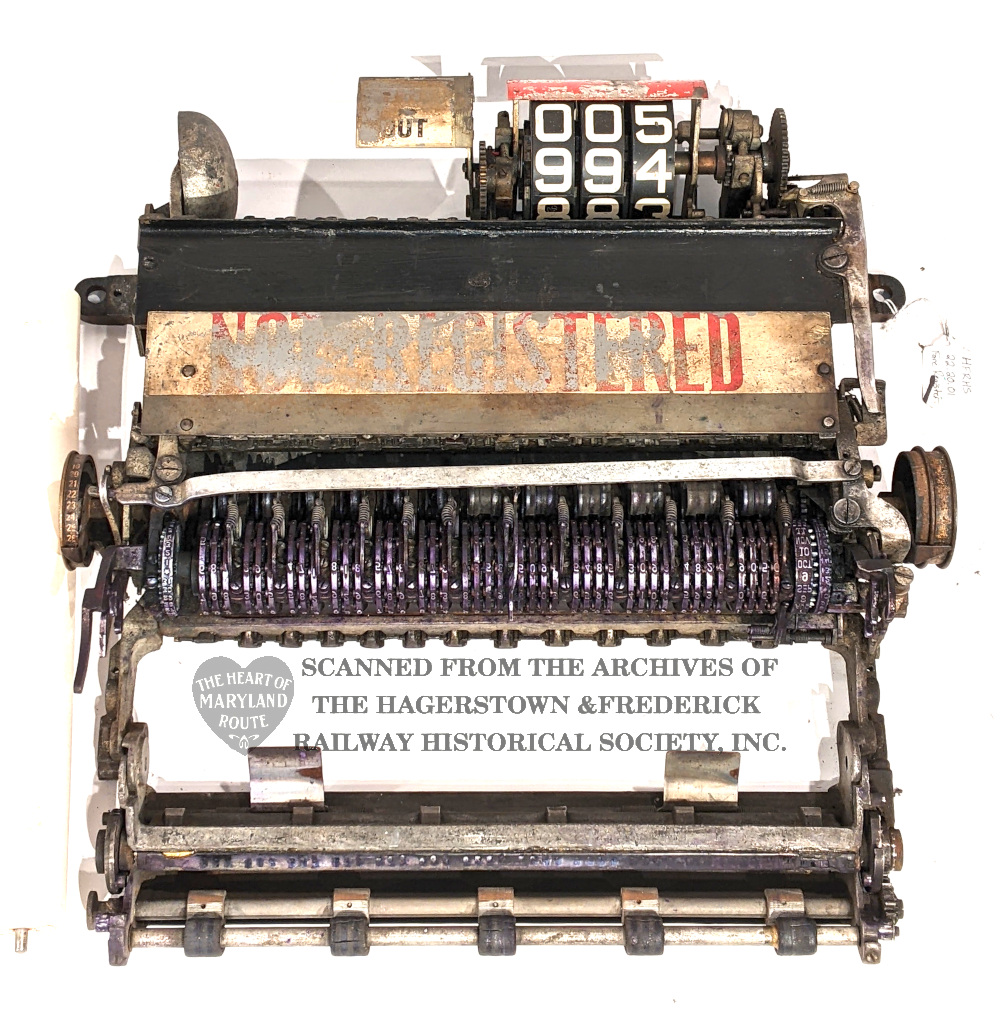
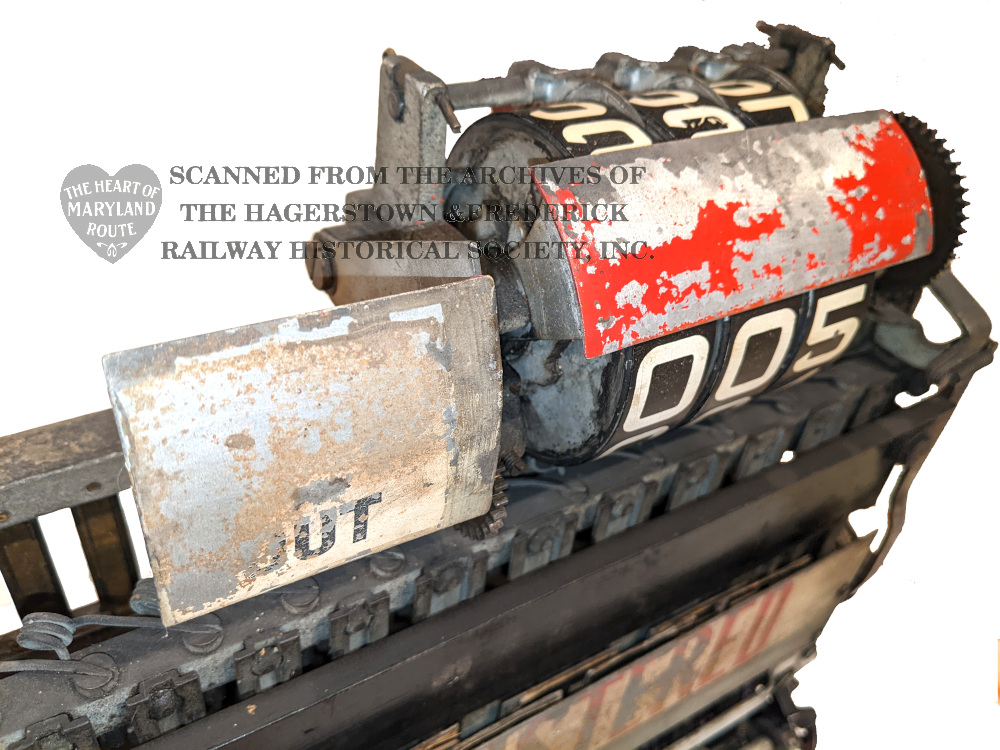
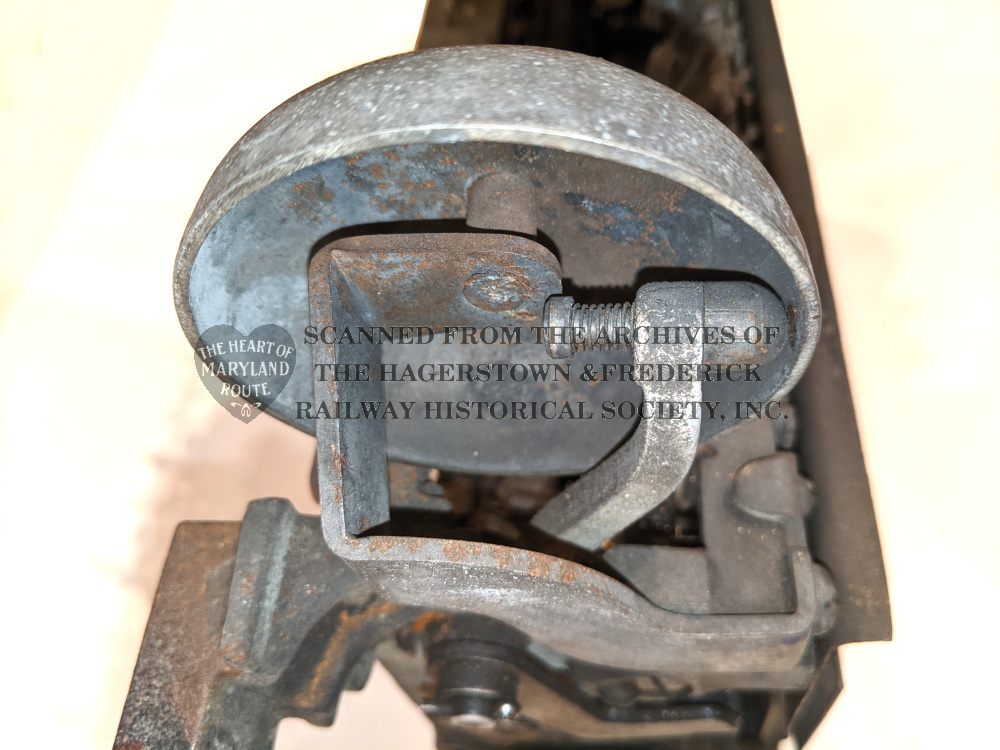
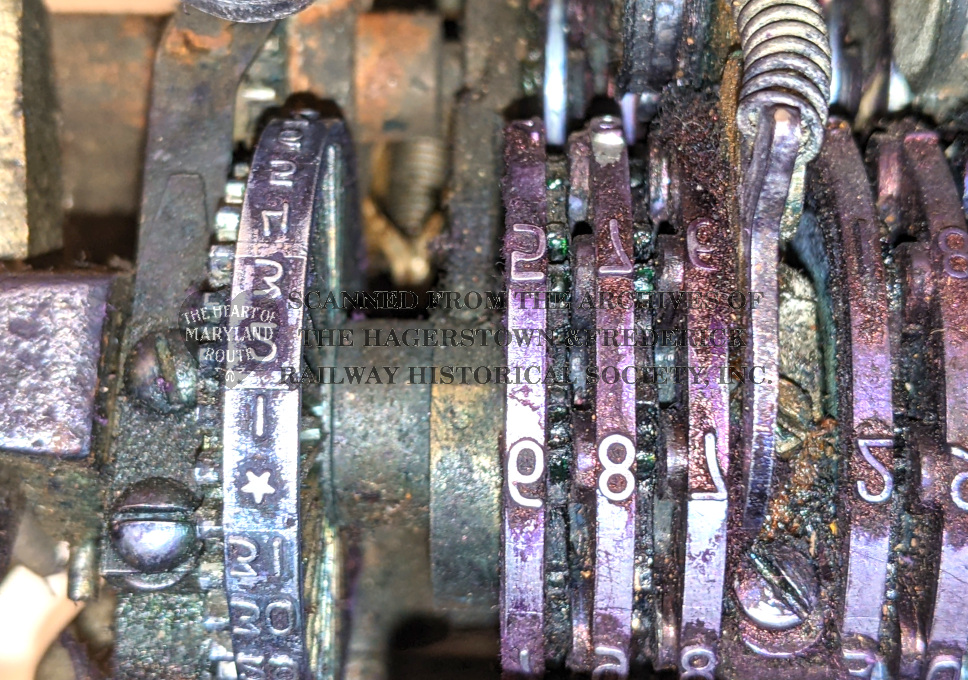
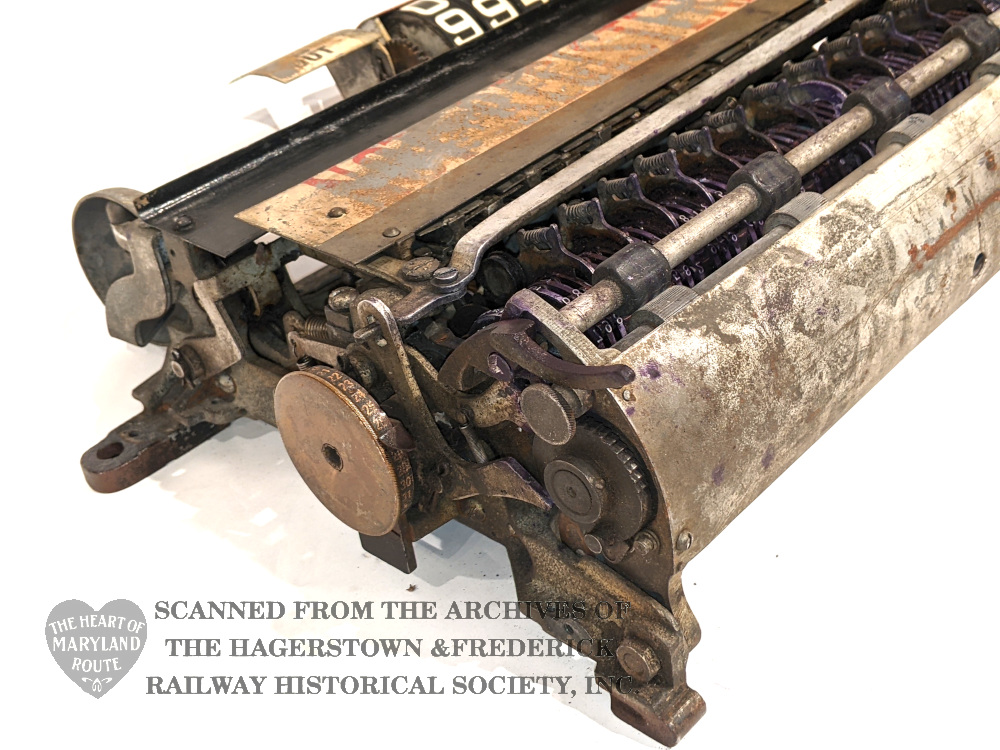
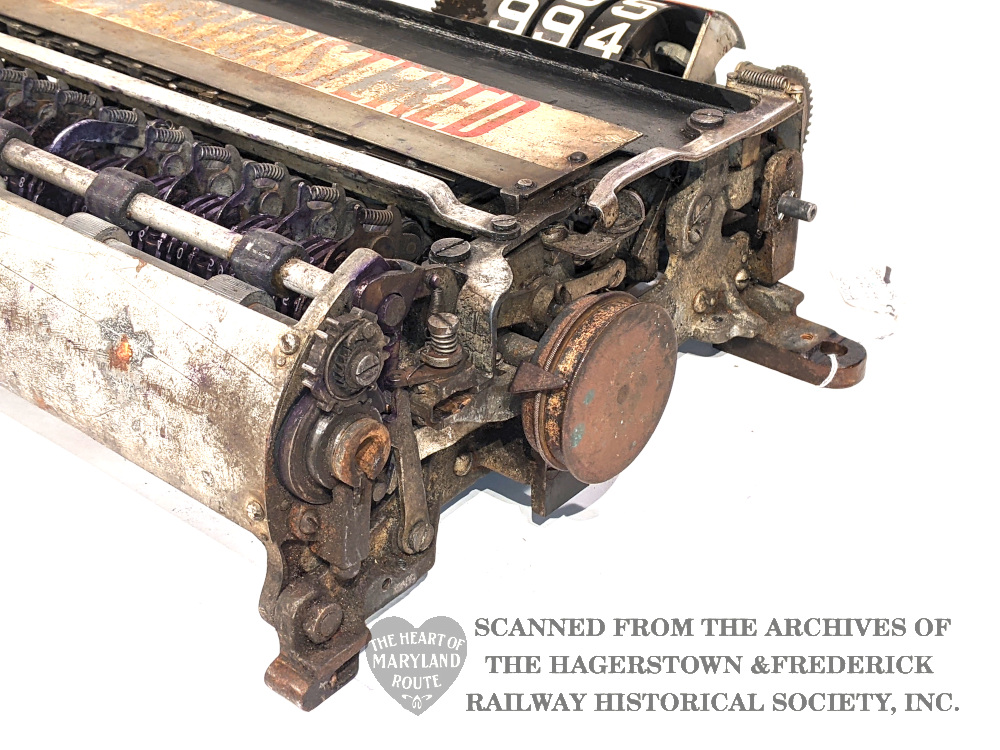
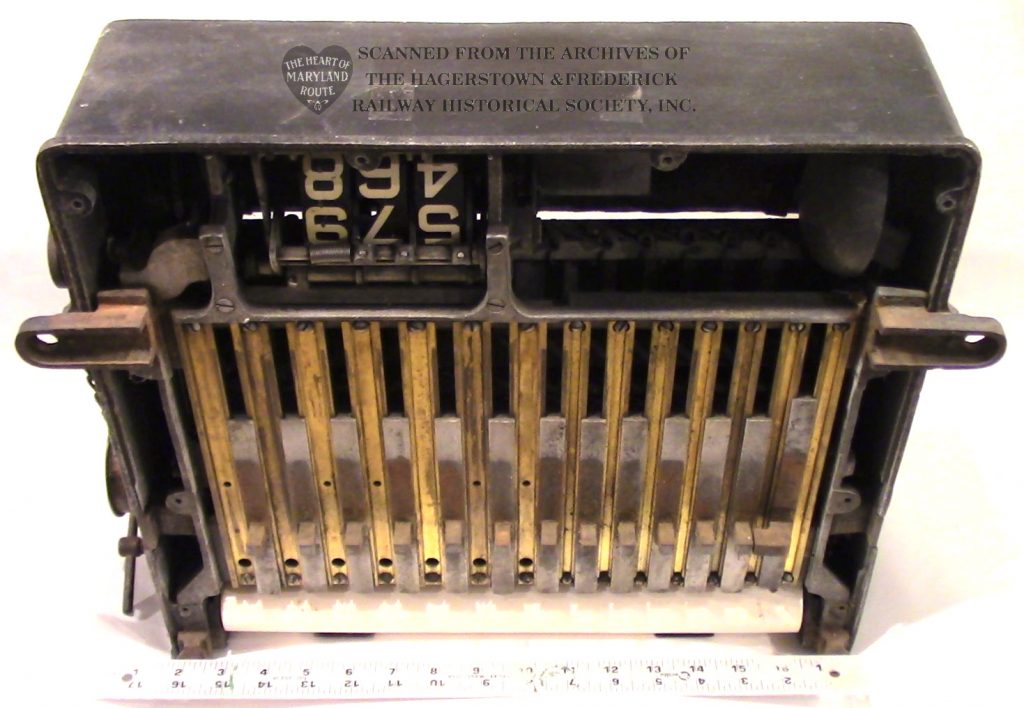
Watch our Register Function:
Additional Resources
